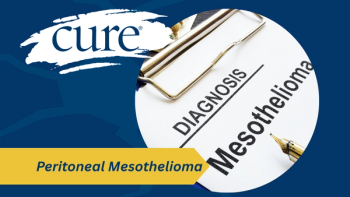
Examining the Prevalence of Lung Cancer Among Female Never-Smokers
Lung cancer is much more prevalent in men than women, yet is still not being looked at as a women's health issue, Andrea Wolf says.
Lung cancer among women who never smoked is twice as common than in men who never smoked — a statistic that alarms Andrea Wolf and her colleagues at Mount Sinai Hospital.
Though lung cancer kills more women than breast, ovarian and uterine cancers combined every year, there is still a stigma surrounding the disease and it is not looked at as a women’s health problem, Wolf says.
“It always gets missed as a women’s health issue and a women’s cancer issue, but it’s the no. 1 cancer killer,” Wolf said. “It’s not talked about enough.”
Wolf is a thoracic surgeon and the head of Mount Sinai’s Women’s Lung Cancer Program.
While women are often reminded to get their mammogram or Pap smear, they very rarely get screened for lung cancer, and since it typically does not show signs until the disease has progressed to later and more dangerous stages, death rates are higher than they need to be, according to Wolf.
“The key is to diagnose before it causes any symptoms, when it can be cured. The best we can do now is take people who are at higher risk — be it people who smoke, have a family history of cancer or even encounter second-hand smoke — and screen them,” Wolf says.
According to a three-year study, people who got screened for lung cancer via low-dose CAT scan had about a 20 percent lower chance of dying from the disease.
Despite lung cancer being the no. 1 cancer killer for both men and women, the proportion of female never-smokers who get diagnosed with non-small cell lung cancer (NSCLC) is twice as high as the prevalence of men never-smokers who are diagnosed (20 versus 10 percent). This is a problem that is not well understood because there has not been much lung cancer research that stratifies men and women, Wolf said.
“Women have different risk factors, in terms of second-hand exposure, as well as different social issues,” Wolf said, noting that the average age of developing lung cancer is 65 and older. Many of the women in the study held jobs, such as a flight attendant, that exposed them to second-hand smoke in confined spaces.
When it comes to those who do smoke, women may have a more difficult time quitting because of issues like weight gain and stress that come along with cessation. Though men started smoking in earlier decades and had a higher rate of cigarette use, as a population they began to quit earlier and faster than women did, bringing the prevalence of smoking in men and women to comparable levels.
“It was the gender gap we didn’t want to close,” Wolf said.
Smoking or not, women also are more at risk for certain genetic abnormalities, such as the EGFR mutation that may make them more susceptible to adenocarcinoma and have a worse prognosis.
“The thing that complicates it — and that we don’t understand well — is that even though the proportion of women who get lung cancer who never smoked is much higher in men, it doesn’t necessarily translate that women non-smokers are at higher risk for lung cancer,” Wolf said.
“It just means that the nature of how women develop lung cancer is different. And so we don’t actually think that women are at higher risk of lung cancer than men. It’s an issue of proportions, so to speak,” she continued, emphasizing that there is a need to do more studies analyzing men and women separately to better understand why women get lung cancer more than men.
For women who are already facing lung cancer, Mount Sinai established the Women’s Lung Cancer Program that is led by Wolf and features a team of health care providers ranging from massage therapists to nutritionists, radiologists, psychologists and of course, oncologists.
“Lung cancer is having a huge impact on patients because of the burden of the disease,” Wolf said. “We created a program that is a more personalized approach and takes on some of the issues, including psychosocial and biologic, that are pertinent to women.”





